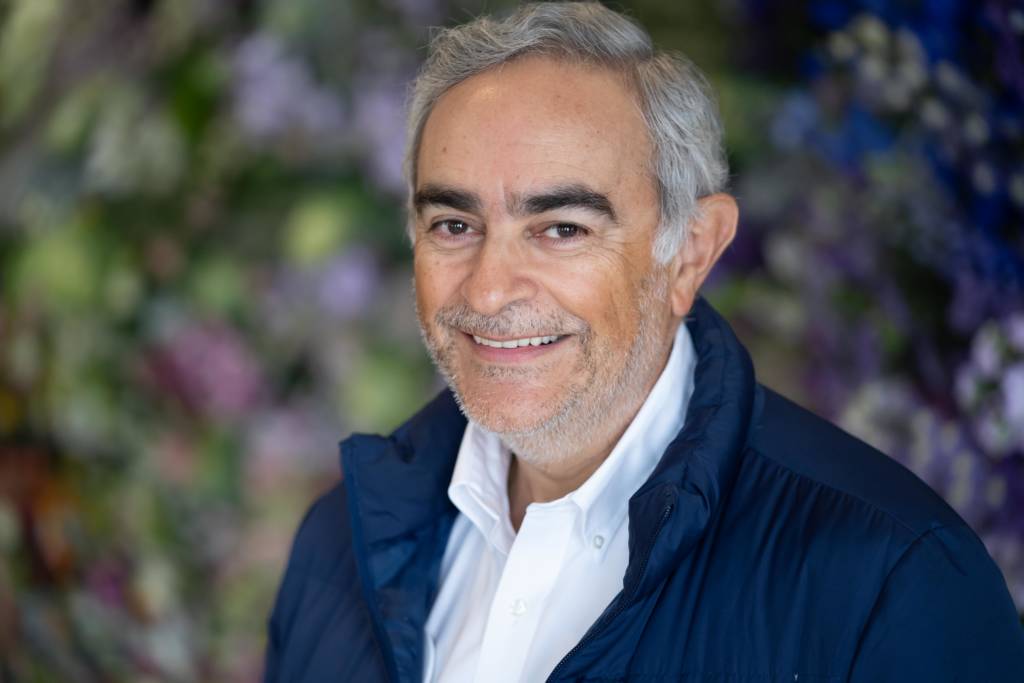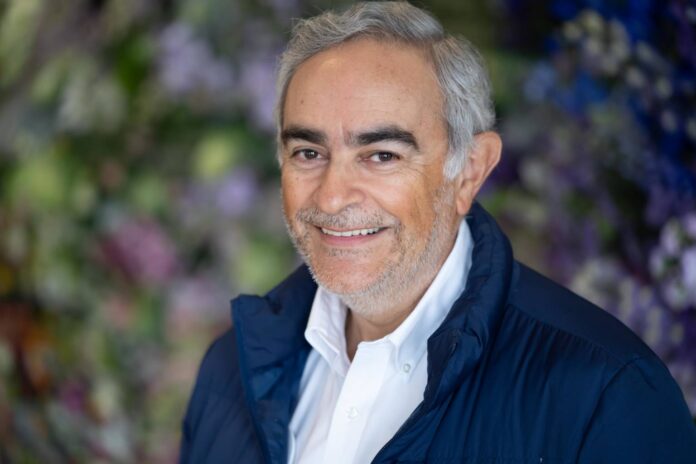Gabriel Becerra joined the Wholesale Florists and Florist Supplier Association (WF&FSA) as its new president last June. FloraCulture International sat down with him to discuss the current state of America’s floral wholesale business.
Ron van der Ploeg, FCI Editor, wrote in the FCI March edition: Meeting Gabriel Becerra for the first time, you can’t help but notice his colourful pin articulating the following words: “Helping People Express Feelings with Flowers”.
Becerra is the president of Miami-based Golden Flowers, and he took up the presidential post at Wholesale Florists and Florist Supplier Association (WF&FSA) last June.
He echoes his pin button’s sentiments when he says: “There is no doubt that we are living in a special moment. Now is the time to think about the future of our sector. We have confirmed that what we do and what we offer every day is very relevant. We have seen all the challenges. We have overcome them as we accomplish our purpose and mission as an industry.”

WF&FSA president Gabriel Becerra.
FCI: Mr Becerra, would you please briefly introduce yourself and say something about your background in floral? And of course, we’re happy to learn more about Golden flowers, your Miami based business, which is a quintessential family-run business, am I right?
Gabriel Becerra: “I became the president of Golden Flowers 29 years ago when my family and I moved from Bogotá, Colombia to Miami, Florida.
Golden Flowers is a floral importer and distributor of fresh-cut flowers. We serve customers throughout the United States and Canada. Our team comprises different people with different backgrounds and experience levels. In one way or another, we have become a family. Throughout the last few years, we’ve showcased not only our high-quality, long-lasting flowers but also the people that make it all possible. Our relationship with our farm partners is of great importance, as well as the relationships we’ve built with our customers and even the end-consumers who get to experience the benefits of our flowers.”
Almost two years have passed since the World Health Organisation declared Covid-19 a pandemic, causing massive disruption to the global flower industry. Where are we now?
“During my time in the industry, we’ve faced many challenges and disruptions that are out of our control, like issues dealing with weather. These challenges have made us, in my opinion, an incredibly resilient industry. When the pandemic first hit, the uncertainty we faced was unprecedented, but we quickly sprang into action. We created meaningful connections and collaborations with customers and communities to not only mitigate some of the supply chain and demand challenges but also to innovate opportunities to give more people access to flowers and to empower one another.”
In every economic sector, we all know that the global health crisis has created winners and losers, with some segments of floral feeling more pressure than others. How is the situation in US floral?
“With the pandemic, we saw an increase in consumption of flowers in the United States (and throughout the world). With lockdowns, isolations, and quarantines in place at the beginning of 2020, people were looking for comfort, and they found that in flowers. This high demand by people wanting to express their feelings with flowers has not dwindled. Whether it’s self-care or gifting, people are continuing to buy and enjoy flowers.”
How many members does WF&FSA currently have, and what percentage of total floral wholesale do they represent in value?
“WF&FSA represents nearly 300 companies in the floral distribution industry, including wholesalers, suppliers, growers, importers, and other companies involved in the supply chain.”
A good wholesaler brings value to the buyer; the same goes for WF&FSA; a good trade association brings value to its members. What is the most clever way to do that?
“I believe we need to give our members support and let them know they are not alone. Do they need help with their online presence? Do they need updated information about the supply chain shortage? Being transparent, offering services to improve their business, and communicating information they might not necessarily have will help our members. Additionally, we should be asking our members how else we can help them. Helping promote the industry, our products, and the benefits of flowers all bring value to our association. We’re here to bring people together and help them sell flowers in the process.”
What is the best piece of advice you can give with regards to skyrocketing transportation costs, lack of drivers, delay, capacity shortage and all other logistic disruption?
“I think it’s important to recognise that these challenges affect all of us. What I believe to be most important are communication and education. We are transparent with them by communicating clearly and educating our customers on these challenges and why they affect us. This openness allows our customers to communicate further these challenges with their customers (the ultimate end-user). This accountability creates a chain of information that ends up at the hands of the consumer, who then understands why the bouquet they bought at their local florist shop or supermarket might be more expensive than before. So, to summarise: communication and education lead to understanding and compassion.”
To conclude, tell us something more about your forthcoming conference 7-9 March 2022?
“We are always working with our members to add value to the annual Floral Distribution Conference. We’re rolling out new programmes and interactive sessions at FDC 2022, including wholesaler discussion groups, speed networking, and a powerful business motivational talk by award-winning journalist and strategic communications expert Ryan Avery. We are very excited to showcase The Flower Movement, a grassroots effort led by WF&FSA to bring the floral community together. We look forward to sharing with the floral community the amazing efforts done to promote the happiness that flowers bring.”







